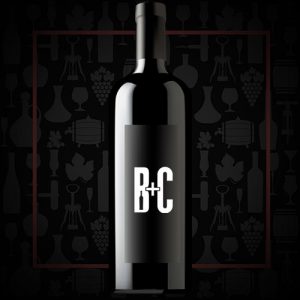Cellar Profile
Uvairena 1750 draws its name from the Spanish word “uva”, meaning grape, and “renda”, an indigenous Guarani word meaning “place”; 1750 refers to the property’s elevation in metres. Opening in 2004, the winery was the brainchild of Francisco Roig, now a US citizen, who wanted to give back to the land of his birth. It is run by the indigenous people of region, mostly women, including winemaker Maria Eldy Contreras, with that heritage proudly displayed on the bottle. The limestone and slate-dominated vineyards are farmed sustainably, using organic practices and without the use of herbicides. There is minimal intervention in the vineyard or cellar, and the winery eschews oak in all of its wines, save for a couple of Reserves, in order to let the terroir show through in the glass. The wines produced from these high-elevation vineyards are lithe and lively, harkening more to the wines of Southern Chile, than to the wines of their Argentinean neighbour. Yields from this challenging climate are low, is total production. In recent years, Uvairenda 1750 began to work with its neighbours, hoping to source prime vineyard locations for future harvests.
Region
Samiapata sits in the “elbow” of the Andes Mountains, beside the Siberia ranges. The Valles Crucenos was first planted to vine in 1595, making it one of the oldest wine regions in the Western hemisphere. The high elevation vineyards of the region were used to make rather pedestrian wines until Francisco Roig of Uvairenda began transforming several into vineyards capable of crafting fine, premium wines. This is the furthest east that viticulture takes place in South America. Viticulture this far into the tropical zone is possible because of the temperature drops caused by high elevation and stiff winds that gust northwards from Patagonia (known as the Surazos). There are coffee plantations just 30 km away, in the lowland areas of the valley! The low average rainfall (less than 30 inches per year) and near-constant winds mean there is little risk of mildew or rot in the vineyard. The soil of the region is a mix of sandstone, clay, slate, limestone and gravel.
Vineyard
The vineyards of Uvairenda sit at elevations of 1750m and higher. The vines are planted on terraces of rocky soil, composed of slate, large slabs of sandstone, limestone and clay. Ground cover is used between rows to minimize erosion from blustery winter winds. With scant rainfall, well-drained, mineral-rich soils and huge diurnal shifts, the vines struggle greatly, enhancing the character and depth of the wine produced. This is prime terroir for growing complex red varieties. No herbicides are used in the vineyards.
Varieties
Cabernet Sauvignon is probably the most famous red wine grape variety on earth and has successfully spread to almost every wine growing country. DNA profiling carried out in California in 1997 confirmed that Cabernet Sauvignon is the product of a natural genetic crossing between key Bordeaux grape varieties Cabernet Franc and Sauvignon Blanc. There are two key reasons for Cabernet Sauvignon’s rise to dominance. The most simple and primordial of these is that its vines are highly adaptable to different soil types and climates; it is grown at latitudes as disparate as 50°N (Okanagan Valley, Canada) and 20°S (northern Argentina), and in soils as different as the gravels of Pessac-Leognan and the iron-rich terra rossa of Coonawarra. Secondary to this, but just as important, is that despite the diversity of terroirs in which the vine is grown, Cabernet Sauvignon wines retain an inimitable “Cab” character, nuanced with hints of provenance in the best-made examples. Cabernet Sauvignon wines always seem to demonstrate a handful of common character traits: deep color, good tannin structure, moderate acidity and aromas of blackcurrant, tomato leaf, dark spices and cedarwood.
Winemaking
Hand-harvested grapes from steep, rocky terraces are gently pressed, then fermented in stainless steel, undergoing a long slow ferment with periodic punchdowns. A portion of the wine is aged in French oak barrels before being released unfiltered. Winemaker Maria Eldy trained as a chemist and has meticulously adhered to high quality standards while making wine that is authentic to its place and representative of 1750’s unique terroir.
Tasting Notes
A light style of South American Cabernet Sauvignon, coming across as almost cool climate, with a generous helping of red pepper mingling with strawberry, currant and coffee on the nose. The palate is medium-bodied, lively with acidity and structured with some silky tannins. On the palate, you’ll find ripe red fruit with hints of tea, blackberry, vanilla and red plum. This refreshing wine would pair beautifully with roast pork, peppercorn steak or grilled shiitake mushrooms.

 info@buyersandcellars.ca
www.buyersandcellars.ca
info@buyersandcellars.ca
www.buyersandcellars.ca